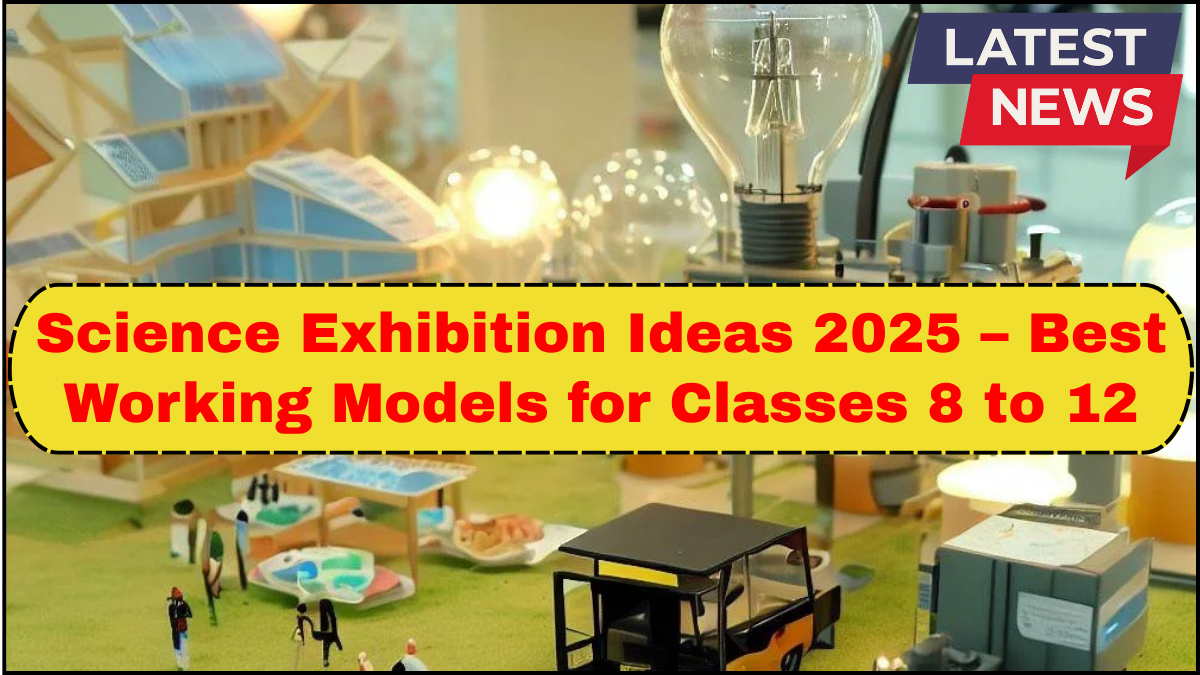Science exhibitions are more than just school events—they’re a launchpad for creativity, innovation, and hands-on learning. Whether you’re a student looking to make an impact or a teacher seeking fresh inspiration, selecting the right project is crucial. Here are some of the Best Science Exhibition Ideas for Class 8–12 that blend scientific principles with real-world application, perfect for 2025 and beyond.

1. Smart Irrigation System Using IoT
Concept: Combine agriculture and technology to conserve water using moisture sensors and microcontrollers.
How It Works: The system monitors soil moisture levels and activates irrigation only when needed. Components include Arduino/Raspberry Pi, a moisture sensor, relay module, and a water pump.
Why It’s Great: Teaches automation, environmental conservation, and coding basics.
Class Level: 10 to 12
Project Tip: Simulate drought conditions and show how this system outperforms traditional watering methods.
2. Wireless Power Transfer Model
Concept: Demonstrate the principles of electromagnetic induction to transfer power wirelessly over short distances.
How It Works: Use copper coils, capacitors, and a power source to transfer electricity without wires.
Why It’s Great: Explains key physics concepts and shows future applications like wireless charging.
Class Level: 11 and 12
Project Tip: Add an LED bulb or fan to show successful power transmission.
3. DIY Microscope Using a Smartphone
Concept: Transform your phone into a powerful microscope with a few accessible components.
How It Works: Attach a lens (like one from a laser pointer) to the phone camera and place specimens on a slide. Use an adjustable stand for focusing.
Why It’s Great: Affordable and practical; introduces optics and biology.
Class Level: 8 to 10
Model Topics & Project Tips: Compare different samples like onion cells, hair strands, or fabrics. Label them neatly to impress judges.
4. Air Pollution Level Detector
Concept: Build a device that detects and displays pollution levels using gas sensors and microcontrollers.
How It Works: Use sensors like MQ135 with Arduino to measure air quality. Display results on an LCD or via a mobile app.
Why It’s Great: Highly relevant with growing concerns over environmental health.
Class Level: 10 to 12
Project Tip: Compare indoor vs. outdoor air quality at different times of day.
5. Saltwater Battery
Concept: Generate electricity using saltwater as an electrolyte.
How It Works: Insert copper and zinc plates into a saltwater solution. Connect multiple cells to power small devices like LEDs.
Why It’s Great: Introduces electrochemistry in an engaging way.
Class Level: 8 to 10
Model Topics & Project Tips: Showcase the scalability of the model by connecting multiple cells and powering a calculator or clock.
6. Solar Tracker System
Concept: Design a solar panel that follows the sun automatically for maximum energy efficiency.
How It Works: Use light-dependent resistors (LDRs) and servo motors to move the panel toward sunlight.
Why It’s Great: Demonstrates practical renewable energy solutions.
Class Level: 9 to 12
Project Tip: Include data comparing energy output from fixed vs. tracking panels.
7. Water Purification Model
Concept: Build a compact system that demonstrates basic water filtration and purification methods.
How It Works: Use activated charcoal, sand, gravel, and a UV light source.
Why It’s Great: Explains water treatment processes and promotes hygiene awareness.
Class Level: 8 to 10
Model Topics & Project Tips: Test water samples before and after treatment. Use color indicators or turbidity meters for results.
8. Hydraulic Bridge Model
Concept: Simulate a movable bridge using hydraulic pistons and syringes.
How It Works: Water or air pressure in syringes lifts and lowers the bridge platform.
Why It’s Great: Combines physics and engineering for a strong visual demonstration.
Class Level: 8 to 10
Project Tip: Add a small car or boat model to show real-life scenarios.
9. Brain-Computer Interface (Basic Prototype)
Concept: Demonstrate how brain signals can control external devices.
How It Works: Use EEG headsets and microcontrollers to interpret brainwave data and trigger actions like turning on lights.
Why It’s Great: Pushes boundaries of neuroscience and AI.
Class Level: Advanced students in Class 11–12
Model Topics & Project Tips: Collaborate with biology and computer science teachers for guidance and ensure safety protocols.
Key Considerations for a Winning Science Project
-
Originality: Judges look for unique angles or innovative executions of familiar ideas.
-
Clarity: Make sure your model is easy to understand and explain.
-
Relevance: Choose topics that solve real-world problems.
-
Presentation: Use charts, graphs, and neat labeling to support your explanation.
FAQs
Q1: What are the best science exhibition ideas for Class 8?
Answer: Projects like saltwater batteries, DIY microscopes, and hydraulic bridges are ideal. They’re easy to build and effectively demonstrate core science concepts.
Q2: Which model topics are best for Class 12 science fairs?
Answer: Focus on advanced models like wireless power transfer, smart irrigation, or brain-computer interfaces to stand out at this level.
Q3: How do I choose a science project that’s both simple and impressive?
Answer: Go for ideas that use basic materials but address real-world problems—like air pollution detectors or water purifiers.
Q4: How can I make my science model more innovative?
Answer: Add smart features like automation, app integration, or data tracking. Explain potential real-life applications clearly.
Q5: What should be included in a science exhibition presentation?
Answer: Include your hypothesis, working model, observations, results, and real-world relevance. Be prepared to answer questions about your project.
click here to learn more